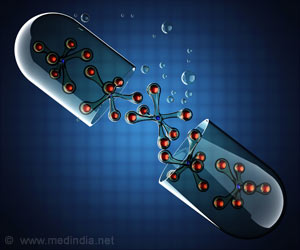A textile research center in Germany has developed garments that could do much more than just cover the body. They have developed T-shirts that provides the user vitamins
A textile research center in Germany has developed garments that could do much more than just cover the body. They have developed T-shirts that provides the user vitamins, underwear that can smell like vanilla and stockings with moisturizer.
These are all examples of bio-functional garments that have been developed since the textile industry followed the example set by the food industry when it came up with functional food.The garments have some additional use beyond their usual functions of covering the body and keeping it warm. They either smell nice, as in the case of vanilla underwear, provide the user with some kind of personal care product, as in the vitamin C T-shirts, or they might absorb a bad smell.
However, whether the clothes keep their promise is a contentious matter. Experts also fear the garments could lead to allergic reactions.
"Various techniques are applied in the production of bio-functional textiles. One method involves simply putting the substance on the surface of the material," said Hans-Juergen Buschmann, a chemist at the German textile research centre in Krefeld.
Aloe vera, a plant-based product found in many lotions, or jojoba, used in cosmetics as a moisturiser, is applied to textiles in this way. The catch is, the substances eventually are washed out of the clothes.
"Therefore, the technique is used on nylon pantyhose, for example, because they tend to have a shorter life anyway," said Buschmann.
Advertisement
"It's been demonstrated that the substances can be absorbed through the skin," said Uta-Christina Hipler, director of the laboratory at the clinic for dermatology at the university in Jena about 250 km southeast of Hanover.
Advertisement
Wearing the garment and washing it reduces the number of microcapsules, and the item loses is extra functions. To counter this, manufacturers recently began offering consumers packets to refresh the supply of microcapsules, Buschmann said. These packets can be emptied onto the garment after it's washed. Buschmann said he was sceptical about this actually being affective.
Clothing with cyclodextrines is different, and they fulfil two functions. They can release not only scents and personal care products, they also can store unpleasant odours such as sweat or cigarette smoke, leaving sport coats still wearable after a night out at the bar.
The body's moisture releases the active ingredient. The same thing happens in the washing machine, but the cyclodextrines are not destroyed in the process and can be refilled after every wash by spraying the garment with a favourite perfume, for example. If the scent isn't wanted after a period of time, the only thing required is moistening the garment.
"It will smell strong for a short time, and the hollow compartments will be empty again," Buschmann said.
Cyclodextrines work the other way around when it comes to sweat and tobacco smells. They encapsulate the scent and store it until the next wash. Shirts and jackets with these functions already are on the market. Clothing with cyclodextrines that contain personal care agents is not yet available for sale, according to Buschmann.
Consumers hardly recognise what process was used to produce their bio-functional garments. It simply says on the label "feel fresh" or something similar, Buschmann said. This makes the selection difficult, and the article's contents often are unclear.
Hipler advises people with skin problems strictly to avoid these products. Their skin needs active ingredients whose exact purpose is known, Hipler said. The products are harmless, however, to healthy skin.
Ahrens added that aroma components in garments belong to a group of sensitising materials and can cause contact allergies. And it remains doubtful that the personal care products have any benefit at all.
--Edited IANS





